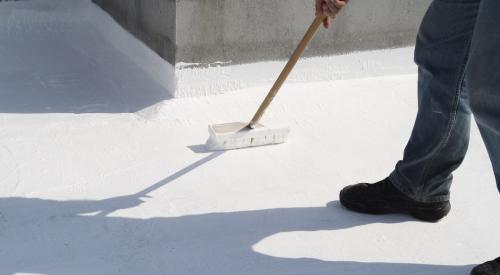Cool roofs — roofs that use reflective materials to limit solar heat gain — can cut cooling loads by up to 20 percent. Conventional cool roofs have light-colored surfaces with colors that work well on commercial facilities with flat or low-sloped roofs.
But homeowners prefer darker colors for their steep-slope roofs, leaving them without a cool-roof option — until now. Manufacturers have developed dark-colored pigments for roofing materials that reflect sunlight instead of absorbing it. These pigments are now being used in coatings for metal roofs, in clay and concrete tiles, and in the multi-colored granules from which shingles are composed.
"For years we've known there's a benefit to having white roofs," says Chris Scruton, project manager for the California Energy Commission. "But most people in residential buildings don't want a white roof, so these cool-colored materials give you a lot of benefit because about 50 percent of the radiated solar energy is in the infrared spectrum. It's heat. And you can potentially reflect that part and still maintain a normal color."
 Tiles with coatings made from cool-colored pigments (in the top row) look similar to conventional tiles (in the bottom row), but they offer improved solar reflectance(R) values. |
In 2002, the California Energy Commission asked Lawrence Berkeley National Laboratory in Berkeley, Calif., and Oak Ridge National Laboratory in Oak Ridge, Tenn., to collaborate with a consortium of 16 manufacturing partners to develop "cool" non-white roofing products for the residential roofing industry. The California Energy Commission's Public Interest Energy Research (PIER) Program funded this research.
"We funded the whole project which involves, from start to finish, the development and enhancement of those products," Scruton says. "The reason it's important is that there's a significant energy and demand reduction potential, especially in hot, sunny climates like we have in the Southwest."
The commission's goal is to create dark shingles that reflect at least 25 percent of light and other non-white roofing products — including tile and painted metal — with solar reflectances not less than 45 percent. Reformulating pigmented coating allowed the manufacturing partners to accomplish this.
"They are looking for pigments that have ordinary colors in the visual range," says Scruton, "but have this unusual property of being highly reflective in the infrared range. An example of that is chlorophyll [found in] plant leaves. It's highly reflective in the infrared. That's part of the reason why leaves on trees stay nice and cool even while they're out there absorbing sunlight."
Elk Roofing, a Dallas manufacturer that is using granules developed by 3M, offers five shingle products with reflectances of 25–27 percent in popular colors like slate and grey. Chino, Calif.-based Custom-Bilt Metals has also begun using all cool-color coatings on shingles.
"They don't have any other kind," says Scruton. "They don't have two kinds of brown — hot brown and cool brown. They just use cool brown, and that's what we'd like to see others do."
Scruton says the cost differential in cool roofs versus standard roofs is minimal because the coatings are relatively thin.
"Even though some of these pigments might be somewhat expensive, there're not a lot of them in the roofing material," says Scruton, "so it really doesn't add anything to the cost."









